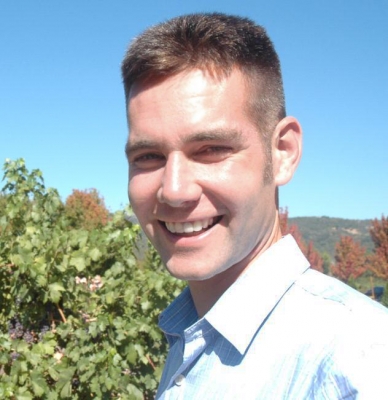Visiting scholar shares research on why people walk, bicycle

As a bicycle and pedestrian planning consultant, it bothered Robert Schneider that no one seemed to know exactly what made people choose to walk or bicycle. So he set out to change that.
Now a doctoral candidate from the University of California Berkeley, Schneider will share what he found out during a seminar Friday in Portland.
Working on projects including the Seattle Bicycle Master Plan, Schneider always sought a solid explanation for people’s transportation choices. “There was a great interest in walking and bicycling, and communities were doing more planning for those modes,” he said. “But there was also a big need for more detailed research and an understanding of what motivates people to walk and bicycle.”
Those motivations make up Schneider’s dissertation research. He developed a five-step theory on how people choose travel modes, noting that walking and cycling could be promoted at each step: awareness and availability, basic safety and security, convenience, enjoyment, and habit.
To develop the theory, Schneider surveyed 1,000 people at 20 San Francisco Bay Walgreen’s stores in 2009 and held 26 follow-up interviews the next year. He found an association between shorter travel distances and both walking and cycling. He also found that people who walk or bicycle report that they enjoy doing so.
Significantly, his research also showed a statistical relationship between the number of street trees and walking. “I go to community meetings and people mention ‘I like walking on streets with trees; there’s shade and a sense of separation from traffic,’ “ Schneider said. “But I don’t know of studies that have found a statistical relationship. My results suggest this relationship might exist.”
Perhaps more surprisingly, the research also linked walking with neighborhood density, even controlling for factors that usually occur alongside density, such as travel time and distance to destinations. Schneider also asked about people’s enjoyment of walking to help separate out people who moved to a neighborhood precisely because they enjoy walking.
“That’s picking up something about the character of the neighborhood itself that makes people more likely to walk, that makes it more attractive,” he said. Part of that has to do with the built environment, with buildings oriented toward the sidewalk and not set behind large parking lots.
For bicycling, Schneider found that bicycle facilities—he included bike boulevards, bike lanes and multi-use trails, but not just streets merely signed as bike routes—were positively associated with cycling, as was available bicycle parking at the destination.
Encouraging active trips is only half the equation for most people, Schneider said. The other half involves convincing people to leave the car behind. “Thirty percent of all survey respondents, when we asked what mode they would consider, said they would only consider driving; they wouldn’t even consider walking or bicycling.
“It doesn’t cross their mind; they just grab their car keys and go.”
Schneider did find that people were discouraged from driving by higher employment densities, smaller parking lots, and metered on-street parking. Fear for safety, both from collisions and from crime, keep more people driving.
“I think the perception of crime or traffic safety is what’s motivating the mode choice,” Schneider said. “Most people don’t have crash statistics in their head; it’s really what they perceive.”
That opens the door for more education, he said, along with changes to roadways.
The last point in Schneider’s theory, habit, can be strong. That’s why his research suggests pushing walking and bicycling when people’s routines get altered.
“When people change jobs or move to a new neighborhood, that’s a great time for marketing programs,” Schneider said. “At times when gas prices are high, like in 2008 or like now, people think ‘driving is costing me money.’ “
Attaching costs to driving or parking also jolts habits. “Pricing changes also have an affect on people’s habits,” he said. “They reassess their situation.
“And habit provides a feedback loop to stage one”: awareness and availability. That is, people become more aware of other options, and, if those options start to look feasible, they’ll take them.
Details on Schneider's visit are here.
